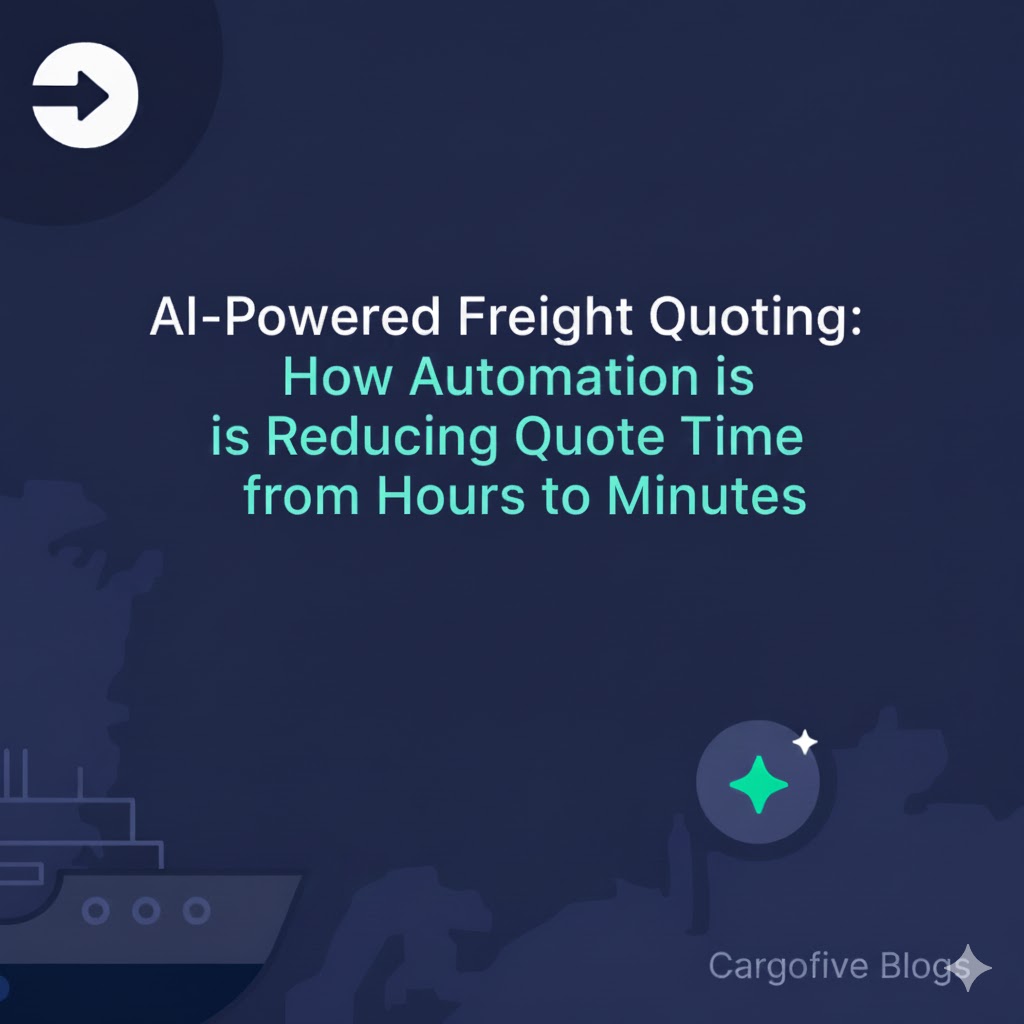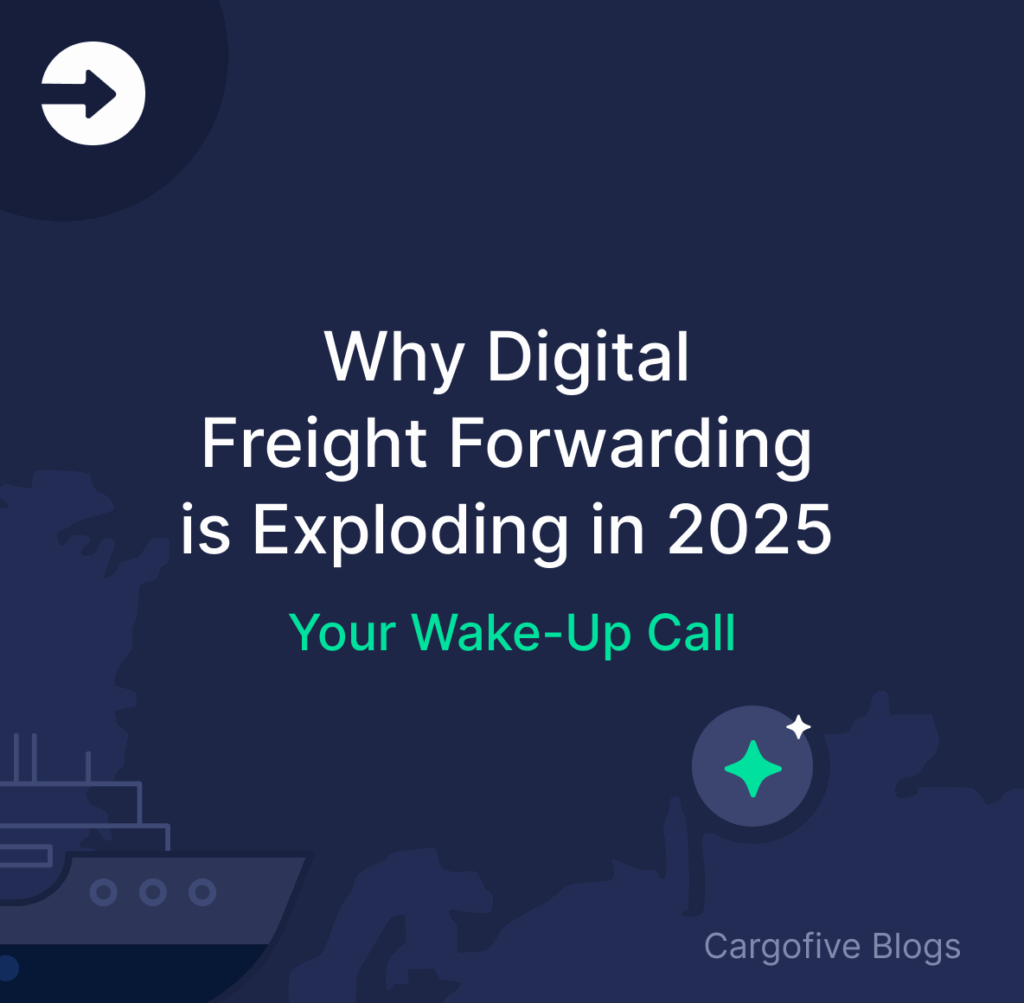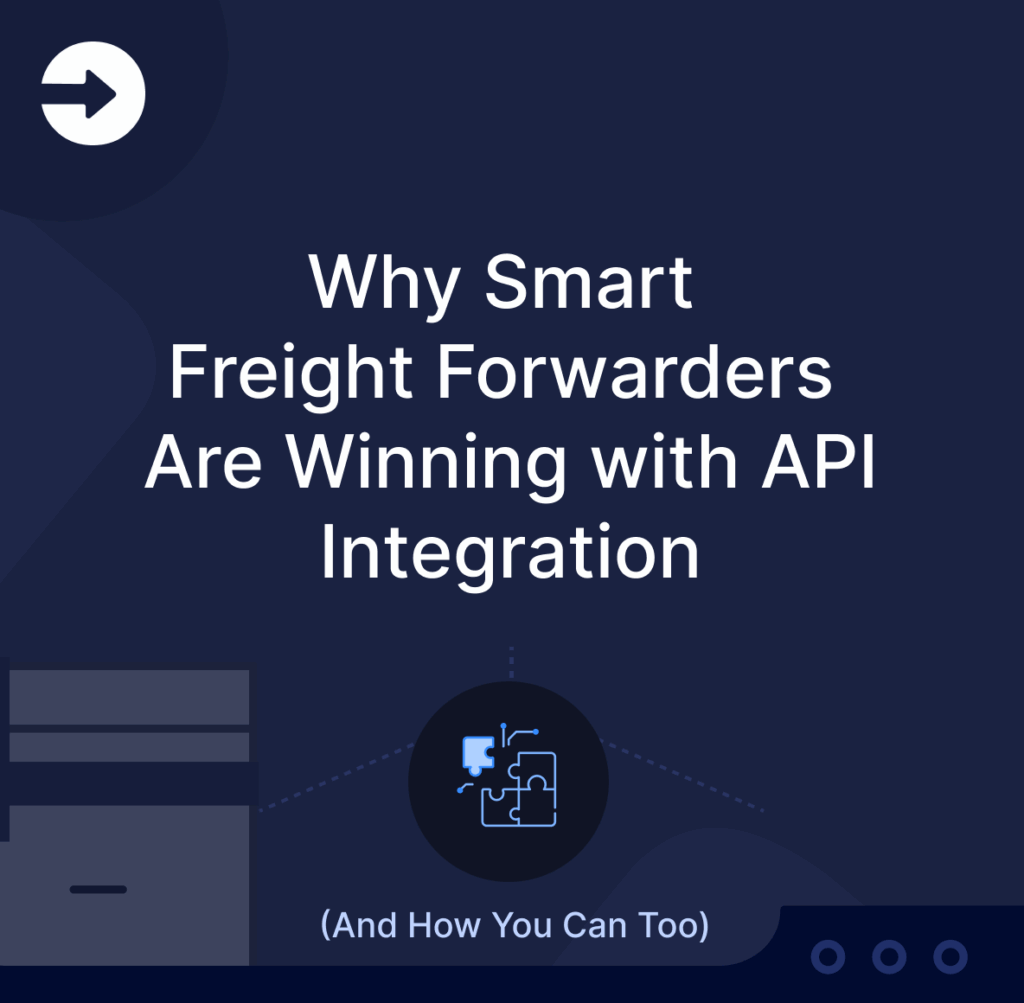In 2025, freight contract optimization is more critical than ever due to rising shipping costs, complex global supply chains, and frequent billing errors. Companies can save millions by leveraging data, digital tools, and smarter strategies. Here’s how to stay ahead:
- Analyze Freight Data: Identify inefficiencies like overcharges, underutilized lanes, or costly carrier choices. For example, 25% of freight bills contain errors, and 80% of companies overpay for shipping.
- Use Digital Tools: Automate rate management and audits. Platforms like Cargofive reduce quoting time by 90% and cut costs by up to 25%.
- Negotiate Smarter: Use data to secure better rates, flexible terms, and volume discounts. Index-based contracts and dynamic pricing models help manage market volatility.
- Plan for Disruptions: Combine predictive analytics with scenario planning to anticipate market shifts and minimize risks.
- Consolidate Shipments: Combine smaller loads to reduce costs, improve delivery efficiency, and lower carbon emissions.
Freight optimization isn’t just about cutting costs – it’s about staying competitive in a challenging logistics landscape.
Freight negotiation strategies in 2025: advice for buyers and SMEs
Analyzing Shipping Data for Better Decisions
Understanding your freight data is the first step toward smarter freight contract management. Did you know that around 25% of freight bills contain errors, leading businesses to overpay by at least 13% annually? That’s a significant hit to efficiency and profitability.
Modern freight analytics goes beyond just crunching numbers – it’s about using data to cut costs, streamline operations, and stay competitive.

negotiation strategie
Understand Your Freight Profile
Creating a detailed freight profile means tracking key metrics across various aspects of your operations. This includes shipment details, costs, performance, inventory, and even customer feedback. By piecing these elements together, you’ll get a clear view of how your freight processes stack up against what you’re paying.
Focus on metrics that matter. For example, shipment volume, delivery turnaround times, driver efficiency, and fuel usage are essential for operational insights.
Delivery performance can be measured by lead times and accuracy, while financial metrics like operating ratios and inventory turnover shed light on cost efficiency.
According to McKinsey, inefficiencies in freight operations can drive up logistics costs by as much as 19%, resulting in an annual loss of up to $95 billion in the U.S. alone.
To make these metrics actionable, rely on SMART KPIs – Specific, Measurable, Attainable, Relevant, and Time-Based.
Prioritize leading indicators that help you identify potential issues early and categorize your metrics into at least two levels of importance. This approach enables better decision-making during contract negotiations.
Here’s an example: A consumer goods company with a $15 million annual transportation budget analyzed its shipping lanes. They found that just 18% of their lanes accounted for 62% of their transportation costs.
The analysis also revealed that shipping in the northeast region cost 22% more per pound compared to other areas, and 35% of shipments under 500 pounds were being sent through less efficient LTL (less-than-truckload) options.
Switching to alternative carriers could have cut costs by 14% on their top 10 lanes.
Conduct Regular Audits
Freight audits are essential for catching billing errors and ensuring carriers stick to their contractual terms. These audits help you identify overcharges, billing mistakes, and service discrepancies, all of which can significantly impact your bottom line.
Considering logistics costs can account for up to 10% of a company’s total revenue, accurate auditing is critical.
To make audits effective, tailor your audit rules to match your carrier agreements, including rates, accessorial charges, and service levels. Use exception management systems to flag issues quickly and resolve them before they escalate.
This process not only ensures compliance but also provides data that can inform future contract adjustments.
The financial benefits of auditing are clear. For instance, ShipMatrix uncovered $100,000 in overcharges for a customer whose rates were capped. After the error was identified, the carrier corrected the mistake.
Use Historical and Real-Time Data
Combining historical and real-time data offers a powerful way to optimize freight contracts. Historical data reveals patterns and trends, helping you understand pricing shifts and market behavior over time.
Real-time data keeps you updated on current market conditions, spot rate changes, and emerging trends.
Advanced tools like the DAT iQ platform use AI-driven forecasting to predict future rate trends with over 95% accuracy, based on data from $1 trillion in market transactions. These insights can guide your pricing strategies and carrier negotiations.
For example, analyzing historical rate trends on new lanes can help pinpoint when costs are likely to increase or decrease. Armed with this knowledge, you can negotiate with confidence, anticipating market shifts.
Consider this case: An industrial equipment company with a $28 million annual transportation spend grouped its shipments by weight, value, and transit time needs.
They discovered that 28% of their air freight shipments weren’t time-sensitive and could be shifted to ocean transport. This change, along with expedited ocean services, saved them 40% compared to air freight, with only a 7-day longer transit time. By consolidating shipments, they also reduced costs by 12–18%.
Regularly benchmarking your carrier rates against market averages and monitoring performance ensures you’re working with reliable providers who meet service agreements. Modern digital tools can transform these insights into automated strategies, making contract management more efficient and effective.
Using Digital Tools for Rate and Contract Management

The shift to digital tools is revolutionizing how rate and contract management is handled in the freight industry. With freight sales executives spending 43% of their time on pricing and quotes, automation is no longer optional – it’s a necessity to remain competitive.
Digital platforms are stepping in to replace labor-intensive manual processes, offering streamlined workflows that save time and minimize costly mistakes.
The numbers paint a clear picture: 15% of all carrier invoices contain errors, costing the industry approximately $700 million annually.
Digital tools tackle these inefficiencies by automating intricate processes and centralizing data, ensuring smoother operations and fewer errors.
Automate Rate and Contract Processing
Automation in freight rate management eliminates repetitive tasks like manual uploads, calculations, and cross-checking. Digital Rate Management Systems (RMS) can boost team efficiency by as much as 86%, freeing up resources for more strategic tasks.
Take Cargofive, for example. This platform centralizes rate visibility and automates documentation processes.
It consolidates rates from various formats – spreadsheets, PDFs, and emails – into a single system. This approach removes the hassle of hunting through multiple files or folders when preparing quotes or comparing carrier options.
“The automation of rates allows us to process and compare multiple freight rates quickly and accurately, saving considerable time in quoting and selecting the best offer from a carrier!” – Elizabeth Piña, Digital Transformation Executive
Companies using digital rate management tools can process quotes up to 90% faster than traditional methods.
This speed is critical, especially since 90% of shippers now expect digital quotes in under two hours. Advanced rate management systems also help reduce operational costs by up to 50% and cut processing time by 92%.
Beyond automation, real-time integration takes efficiency and accuracy to the next level.
Get Real-Time Visibility and Integration
Real-time updates and system integration ensure a seamless flow of information across operations.
Digital platforms automatically pull carrier rates in real time and track expiration dates, so your quotes always reflect the latest market conditions. This eliminates the risk of outdated rates leading to profit losses or unhappy customers.
Cargofive’s platform, for instance, integrates with over 25 shipping lines, acting as a centralized hub for rate visibility. It syncs data with ERP and TMS systems using automated contract engines.
When rates change, the system updates both platforms immediately, ensuring pricing accuracy across quotes, bookings, and financial records.
Integrating ERP and TMS systems offers measurable benefits. Companies that implement these integrations can cut logistics costs by 15%, reduce inventory levels by 35%, and improve service quality by 65%.
Strong API connections between systems further enhance accuracy and eliminate manual data entry errors.
However, integration costs can vary widely. Basic API setups for TMS systems range from $5,000 to $15,000, while more complex configurations can exceed $50,000[15]. Additionally, cloud-based TMS platforms typically charge $50 to $500 per user per month.
Real-time integration and centralized data also pave the way for more effective compliance management.
Improve Compliance and Data Centralization
Digital platforms simplify compliance by providing a centralized repository for all contract data.
Instead of juggling information across multiple systems and formats, everything is organized in one easily accessible location. This is especially useful for meeting regulatory requirements or managing audits.
A lack of visibility can be costly – 72% of suppliers who experienced supply chain disruptions cited insufficient real-time data as a barrier to quick problem-solving.
Digital tools bridge this gap by offering comprehensive visibility into contracts and rates, enabling faster responses to unexpected changes.
These platforms also streamline the management of contract terms and carrier agreements. Automated systems track expiration dates, rate changes, and service level agreements, ensuring operations stay within contract parameters.
They also provide timely reminders for renegotiation opportunities before contracts expire.
Data security is another key benefit. Unlike traditional methods that rely on physical storage, which is vulnerable to theft or damage, cloud-based systems offer advanced security measures and backup options.
This ensures sensitive information, like contract terms and pricing details, remains protected.
The transition to digital contract management isn’t just about adopting new technology – it’s about fundamentally improving the efficiency, accuracy, and strategic potential of freight operations.
Companies that embrace these tools are better equipped to navigate market changes while maintaining precision and compliance.

Optimizing Carrier Negotiations
Navigating carrier negotiations in 2025 demands more than simply asking for lower rates. With global market conditions remaining unpredictable, shippers need to approach these discussions armed with solid data and adaptable contract strategies.
Prepare Data-Driven Negotiations
Walking into a negotiation without reliable data weakens your bargaining power. Historical rate analysis is critical – it helps you evaluate whether proposed rates are fair for both short-term and long-term commitments.
The importance of preparation is clear. In 2024, Explorate collaborated with a national retailer to streamline supply chain data into a single, centralized source.
This effort resulted in a 4X boost in PO management capacity, 15 hours saved weekly on administrative tasks, and a 5% improvement in container utilization.
“In 2025, successful carrier negotiations depend increasingly on accurate, data-driven insights.” – nVision Global
Benchmarking carrier performance across trade lanes, forwarders, and shipping routes gives you a distinct advantage. Compare rates, transit times, and schedule reliability using hard data instead of guesswork.
Detailed insights into your shipping volumes, seasonal trends, and lane-specific efficiencies allow you to negotiate volume-based discounts with confidence.
Digital tools like Cargofive make this process easier by consolidating rate visibility and historical performance data.
Instead of juggling spreadsheets or pulling information from multiple platforms, you can present clear analytics that showcase your shipping patterns and carrier performance metrics.
Once the groundwork is laid, shift your focus to securing contract terms that can handle market fluctuations.
Focus on Better Contract Terms

Effective negotiations go beyond rates – they also include flexible service levels, volume-based discounts, and clear surcharge structures.
Many shippers are now prioritizing flexibility in contracts to better manage market uncertainty and cost variability.
“Going into negotiations, many shippers are looking for flexibility in their contracts to help navigate the ongoing volatility of the market and fluctuations in costs.” – TOC Logistics International
Volume discounts remain a key lever, especially when supported by precise shipping data. For example, carriers offered discounts of up to 28% for shippers committing to contracts longer than six months on routes from the Far East to North Europe.
Additionally, negotiating transparent surcharge terms – such as fuel surcharges, peak season fees, and accessorial charges – can help shield you from unexpected costs.
Maintaining relationships with multiple carriers is another smart move. It not only provides valuable market insights but also ensures you have options for securing competitive pricing and better terms.
Once you’ve locked in favorable terms, make sure your agreements can adjust to changing market dynamics.
Adapt to Market Changes
Market volatility is here to stay. For instance, long-term shipping rates from the Far East to North Europe rose 57% in 2024, while rates to the U.S. East Coast and West Coast increased 44% and 64%, respectively.
Fixed-rate contracts often struggle to keep pace with such dramatic shifts.
Index-based contracts offer a solution by tying rates to market indices. This approach minimizes the need for constant renegotiation, providing stability for both shippers and carriers during volatile periods.
Similarly, risk-sharing arrangements can help mitigate uncertainties caused by tariffs, trade policies, or sudden market disruptions.
Dynamic pricing models are also gaining traction. These models adjust rates in real-time based on market conditions, demand, and capacity availability. While they require advanced tracking systems, they often lead to more competitive pricing over time.
Companies with streamlined supply chains enjoy significant benefits, including 15% lower supply chain costs, 50% reductions in inventory holdings, and 3X faster cash-to-cash cycles.
To keep your agreements competitive, schedule regular contract reviews. Factor in an estimated 10% to 15% budget overrun for transportation costs, and update forecasts monthly to align your freight needs with current market trends.
Using Predictive and Scenario-Based Planning
Effective freight contract management isn’t just about looking back at past performance. It’s about staying ahead – anticipating market changes, preparing for disruptions, and finding cost-saving opportunities before they become critical issues.
Forecast Demand and Cost-Saving Opportunities
Predictive analytics combines historical data with real-time insights to create better demand forecasts. Instead of relying on outdated methods, these systems factor in variables like market trends, seasonality, weather, and geopolitical events to produce more precise predictions.
Here’s where AI shines. It can boost forecasting accuracy by up to 98% and cut supply chain errors by 50%. Companies using AI have reported impressive results, including a 20% drop in logistics expenses and a 30% reduction in maintenance costs.
“AI-enhanced forecasting reduces errors in supply chain networks by 30 to 50%.” – McKinsey Digital
Real-world examples back this up. TIP Trailer Services, which manages over 70,000 transport units across Europe, achieved 98% accuracy for two-week forecasts and 95% for six-week projections using AI.
This led to an 11% potential revenue boost from improved one-way rentals. Walmart also leveraged AI to monitor stock levels with 95% accuracy, improving employee productivity by 15%.
For freight contracts, predictive analytics helps avoid last-minute booking chaos by forecasting peak shipping periods. This allows for smarter carrier choices and prevents inflated freight rates.
AI-based forecasting can cut shipping costs by 15–25%, optimize inventory timing, and slash administrative expenses by up to 40%. Real-time route planning also reduces empty truck miles by 50%, saving millions on fuel.
“We’re seeing a significant shift in how industrial manufacturers approach freight planning. Predictive analytics is no longer just a nice-to-have; it’s a core component of any forward-thinking logistics strategy. It allows companies to anticipate challenges and optimize their operations well before they happen.” – Mark McEntire, CEO of Princeton TMX
Platforms like Cargofive simplify this process by centralizing rate visibility and historical performance data. This helps freight forwarders spot shipping trends and plan for future needs without juggling multiple data sources. Once forecasts are in place, scenario planning can prepare you for a range of possible outcomes.
Run ‘What-If’ Scenarios
While forecasting identifies likely trends, scenario planning explores various possible futures. This approach helps you prepare for a range of outcomes rather than relying on a single prediction.
Take DB Schenker Bulgaria, for example. To improve transit times for groupage shipments and maximize vehicle use, they worked with Transmetrics to model different network scenarios and run “what-if” simulations.
The process typically involves a few key steps:
- Define potential scenarios: Consider possibilities like natural disasters or geopolitical disruptions.
- Evaluate impacts: Assess how each scenario might influence inventory, delivery times, customer satisfaction, and costs.
- Create strategies: Develop specific plans for each scenario, such as finding
alternative suppliers, adjusting inventory levels, or exploring new transportation options.
Scenario planning also strengthens carrier negotiations. By modeling how rate changes, surcharges, or service level adjustments impact total costs, you might uncover opportunities to save money by tweaking service levels.
Regularly updating your scenarios is vital. As market conditions shift, revising your models ensures you stay ahead of disruptions rather than scrambling to respond.
Embedding scenario planning into daily operations and leadership decision-making turns reactive strategies into proactive ones.
Digital tools like Cargofive make it easier to integrate predictive analytics and scenario planning, helping your freight contracts evolve with the market.
Consolidating Shipments and Improving Efficiency
Advancements in digital rate and contract management have paved the way for smarter freight consolidation strategies, making shipping operations smoother and more cost-effective. By combining smaller shipments into larger ones, consolidation reduces costs and streamlines logistics.
Maximize Load Efficiency
Freight consolidation merges multiple small shipments into a single, larger load, allowing less-than-truckload (LTL) shippers to benefit from full-truckload (FTL) pricing efficiencies.
This addresses a significant issue in the trucking industry: 20–35% of truck miles in the U.S. are driven empty, and loaded trucks only utilize about 57% of their capacity.
By consolidating shipments, companies can improve route planning, shorten transit times, and reduce handling risks – all while cutting down on administrative tasks.
Flexport’s August 2024 example highlights the benefits of consolidation. By merging three less-than-container-load (LCL) shipments totaling 55 cubic meters (1,942 cubic feet) from Yantian to Los Angeles and then delivering to Phoenix, the company saved about 34% in shipping costs compared to moving them separately.
To take advantage of consolidation, analyze your shipping data to identify patterns and volumes. Look for shipments headed to similar destinations that can be combined. Strong partnerships with logistics providers and the use of transportation management systems (TMS) can make this process even smoother.
Additionally, fewer trucks on the road mean lower carbon emissions, aligning cost savings with environmentally friendly practices.
Optimize Delivery Schedules
Precise scheduling is the backbone of effective consolidation. Digital tools like transportation management systems (TMS) simplify planning and execution by creating optimized routes and adapting to real-time changes.
Route optimization software can adjust stops and routes dynamically, factoring in variables like capacity, time, and distance. These systems respond instantly to challenges such as traffic or weather, ensuring smoother deliveries.
The numbers back up these benefits. Businesses using AI in their logistics report a 15% drop in costs, a 35% reduction in inventory levels, and a 65% improvement in service quality.
For example, a national food manufacturer reduced retail compliance chargebacks by 87% after adopting a TMS.
Real-Time Transportation Visibility Platforms (RTTVP) add another layer of efficiency, offering continuous shipment tracking. These platforms let companies anticipate delays and communicate proactively with customers.
Load planning software further enhances consolidation by optimizing how items are packed into containers and trucks.
A European automotive parts exporter, for instance, saw a 12% jump in container utilization and a 15% cost reduction after using EasyCargo for shipments to Asia.
Tools like Cargofive also enhance consolidation efforts by providing specialized rate visibility for combined shipments, helping freight forwarders coordinate deliveries more effectively.

Compare Consolidation Strategies
Different consolidation methods cater to varying shipment needs. Here’s a quick comparison:
| Strategy | Advantages | Disadvantages |
|---|---|---|
| Full Truckload (FTL) | Faster delivery, better schedule control, ideal for large loads | Expensive for smaller shipments; inefficient if not fully loaded |
| Freight Consolidation | Cost-effective for multiple small shipments, reduces handling risks, leverages FTL savings | Requires coordination of multiple shipments |
| Less-than-Truckload (LTL) | Ideal for individual small shipments; pay only for the space used | Slower delivery due to multiple stops; higher risk of damage |
Choosing between LTL and consolidation often comes down to priorities. LTL relies on a hub-and-spoke system with multiple re-loadings, while consolidation combines shipments for direct delivery, cutting costs and transit times.
Consolidation is often the cheaper option because logistics providers don’t need to wait to fill containers.
Buyer consolidation offers another advantage: it provides better regulatory control and eliminates destination CFS fees. This method works well when coordinating shipments from multiple suppliers in the same region.
To implement effective consolidation strategies, assess your freight volumes and shipping patterns.
Align shipment timing to streamline delivery schedules, and maintain organized documentation like bills of lading and loading lists.
Regularly monitor performance to adapt and refine your approach, ensuring ongoing efficiency and cost savings. Balancing cost, speed, and complexity is key to optimizing your operations.

Key Takeaways for Freight Contract Optimization
To stay ahead in 2025, freight contract optimization demands a combination of data-driven strategies, advanced digital tools, and forward-thinking planning.
Relying on manual processes can lead to significant inefficiencies – 23% of contract renewals are missed, quoting times stretch by up to three days, and 43% of sales executives’ time is consumed by outdated workflows. These numbers highlight the pressing need for smarter, more automated solutions.
Data analytics plays a pivotal role in this process. It helps uncover issues like overuse of premium services, hidden fees, delays, and inefficiencies in carrier selection.
By analyzing historical shipping data, businesses can gain valuable leverage for negotiating improved terms with carriers. Advanced analytics also catch discrepancies between contracted rates and invoices, turning raw data into actionable strategies for cutting costs.
Embracing digital transformation is no longer optional – it’s a necessity. Centralized contract management platforms simplify the process by creating a single repository for all freight agreements. These systems ensure version control, maintain audit trails, and make contract retrieval effortless.
AI-powered tools take it a step further, analyzing global freight trends to pinpoint cost-saving opportunities, improve supplier transparency, and boost contract efficiency. Companies using these tools have seen cost reductions of up to 15%.
For instance, Cargofive’s platform has proven to be a game-changer, delivering 90% time savings and 25% cost savings through centralized rate management and streamlined contract processing. David Mateos from Cotransa Group shares his experience:
“The main advantage that Cargofive has in the search and quote part is that we now have a total vision of all the contracts we have, with all the prices, and without having to go one by one searching by folder. We have everything in sight for a second.”
However, technology alone isn’t enough. Anticipating future challenges is equally critical. Proactive planning is what sets successful shippers apart. In fact, 80% of effective negotiations hinge on preparation – analyzing data, reviewing contracts, and planning before sitting down at the table.
Predictive analytics can help businesses foresee disruptions, optimize routes, and make quicker decisions. AI models also flag potential risks, such as upcoming tariff changes, enabling timely contract reviews and renegotiations.
With gross margins at their lowest in a decade, cost optimization is more urgent than ever. According to the 2024 Third-Party Logistics Study, 87% of shippers believe adopting tools like data dashboards and centralized systems is critical for success.
Manual invoice processing, which contributes to a 15% error rate in carrier billing, further underscores the importance of automation for improving accuracy and efficiency.
Ultimately, excelling in freight contract optimization in 2025 comes down to three key strategies: leveraging data analytics to identify inefficiencies and strengthen negotiations, adopting digital tools to streamline processes and centralize management, and prioritizing proactive planning to stay ahead of market changes. Companies that fully embrace these principles will position themselves as leaders in an increasingly competitive logistics landscape.
FAQs
How can businesses use digital tools to streamline freight contract management and cut costs?
Businesses can simplify freight contract management and cut costs by using digital tools that automate tasks and boost efficiency. Automation platforms eliminate repetitive manual work, saving time and minimizing mistakes. Meanwhile, digital freight management systems offer real-time rate visibility, making decision-making faster and more straightforward.
These tools not only enhance operations but also help businesses stay compliant and reduce freight expenses. They speed up processes, improve contract negotiations, and create a smoother workflow. In the end, companies can enjoy both increased productivity and noticeable cost savings.
How can predictive analytics and scenario-based planning help optimize freight contracts?
Predictive analytics and scenario-based planning offer a smart way to fine-tune freight contracts. They help businesses forecast demand with greater precision, which means planning capacity more effectively and keeping costs under control. Plus, these insights make it easier to spot potential disruptions early and adjust strategies to keep operations running smoothly.
By digging into data trends – like seasonal shipping patterns – these tools boost resource allocation and streamline operations. The result? Lower costs and better service levels, making freight management more dependable and efficient.
How does freight consolidation help reduce costs and support eco-friendly logistics?
Freight consolidation is a smart way to cut costs by grouping smaller shipments into one larger load. This method makes better use of cargo space, lowers transportation expenses, and even reduces the likelihood of freight damage. By simplifying the shipping process, businesses can save a lot on their logistics operations.
On top of the cost benefits, freight consolidation is also better for the environment. Fewer trips mean less fuel burned and lower greenhouse gas emissions, which translates to a smaller carbon footprint. This approach not only helps businesses save money but also supports environmentally conscious practices – delivering benefits for both companies and the planet.
AUTHOR



